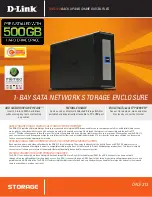
Figure 23. Unpacking the Disk Enclosure using lift handles
CAUTION:
With two persons - positioned one on each side of the enclosure - grip the handles securely,
and lift the enclosure out of the box using appropriate lifting technique. Place the enclosure in
a static-protected area.
Except for the disk drive modules, enclosures are supplied with all integrated PCBs and all
plug-in modules installed. For information about plug-in module replacement, see Chapter 7,
“Module removal and installation,” on page 55. Disk drive modules are installed separately
after the enclosure is mounted in the rack.
3. Prepare to install and set up the enclosure.
a. Before installing the enclosure into a rack, see Chapter 2, “Safety guidelines,” on page 3, and the
Installing the Disk Enclosure WARNING.
b. For rackmount installation, do not install the disk drive modules until after the enclosure is
mounted in the rack.
Required tools
#2 Phillips screwdriver
Requirements for rackmount installation
You can install the enclosure in an industry standard 1.2 m cabinet capable of holding 4U form factors.
• Minimum depth: 1,206.5 mm (47.5") from rack posts to maximum extremity of enclosure (includes rear
panel cabling and cable bend radii).
• Weight: Up to 145.6 kg (321 lb), dependent upon configuration, per Disk Enclosure.
• The rack should cause a maximum back pressure of 5 pascals (0.5 mm water gauge).
• Before you begin, ensure that you have adequate clearance in front of the rack for installing the rails
and the CMA.
• Follow the sequence of tasks provided in the “Installation checklist” on page 25
CAUTION:
• The mechanical lift and the rack must be level in all planes, and with respect to each other.
Failure to comply could result in mechanical failure of the rail kit.
Chapter 4. Installation 29
Summary of Contents for Medium J11
Page 15: ...European Community and Morocco Notice Germany Notice Safety and environmental notices xv...
Page 103: ......
Page 104: ...IBM...
















































